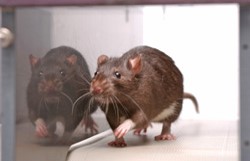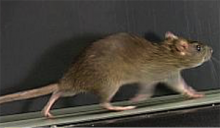Exercise Rat Resources
We have developed rat models of aerobic exercise endurance capacity because of the close association of this phenotype with disease risks. Via two-way artificial selection we have generated models for intrinsic capacity and response to training.
To help “run” this resource, donations can be made to the “Exercise and Aging Research and Resource Lab.”
Low and High Capacity Runners
Intrinsic Aerobic Running Capacity Models (LCR and HCR): In 1996 we started artificial divergent selection for intrinsic aerobic endurance running capacity using genetically heterogeneous N:NIH stock of rats as a founder population (n = 168). Selection for low and high capacity was based upon distance run to exhaustion on a motorized treadmill using a velocity-ramped running protocol. At each generation, within-family selection was practiced using 13 families for both the low and high lines. A rotational breeding paradigm maintained the coefficient of inbreeding at less than 1% per generation.
Low and High Response Trainers
Response to Training Models (LRT and HRT): In 2002 a selection program for response to training was started from a founder population of 100 male and 100 female rats from the genetically heterogenous N:NIH stock. Response to training was operationally defined as the difference in a test of maximal treadmill running capacity conducted before and after 8 weeks of treadmill exercise training. A selection and rotational breeding program between 10 families for the low and high lines was started as the initial step to develop divergent genetic models.
Visit Dr. Lauren Koch's profile page. You may also contact her at Lauren.Koch2@utoledo.edu.




